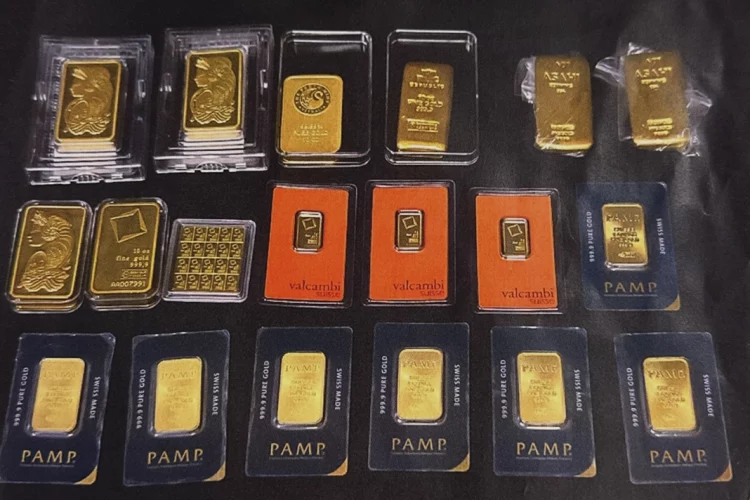Gold has long been regarded as a safe-haven asset, a store of value that can withstand the turbulence of global conflicts, political instability, and economic crises. Its appeal as a protective investment is rooted in centuries of history, with gold consistently demonstrating its ability to preserve wealth through both war and peace. However, the way gold behaves in times of war versus times of peace can differ significantly, influenced by a range of geopolitical, economic, and market forces. This article explores the historical performance of gold during wartime and peacetime, offers expert insights into the current geopolitical climate, and examines the lessons we can learn from the past as we navigate the uncertainties of today’s world.
Review of Gold Price Performance During Wartime vs. Peacetime
Throughout history, gold has had a complex relationship with global conflict. While wars often drive gold prices up due to their disruptive economic effects, peacetime periods can also witness significant fluctuations based on economic growth, inflation, and market sentiment.
Gold’s Performance During Wartime
In times of war, gold traditionally serves as a safe-haven asset, a refuge from the turmoil of conflict. The historical context of wartime has consistently shown that gold prices tend to rise as uncertainty escalates, and fiat currencies become less reliable. During periods of war, nations often resort to inflationary policies, including increased borrowing, printing money, and expanding fiscal deficits to finance military operations. These actions can lead to currency devaluation, making gold, which is not tied to any one currency or economy, a desirable asset for preserving wealth.
Looking back at key conflicts in the 20th and 21st centuries, we can see clear examples of gold’s performance during wartime. For instance, during World War II, the gold price saw substantial increases as governments imposed strict capital controls and devalued currencies. The Vietnam War in the 1960s and 1970s saw similar trends, with gold prices surging as inflation spiked and confidence in the U.S. dollar waned.
Gold’s Performance During Peacetime
In contrast to wartime, the performance of gold during periods of peace is more nuanced. In times of relative stability, gold may not see the same dramatic price increases. Instead, it tends to rise in response to inflationary pressures or economic instability rather than outright conflict. For example, the gold price remained relatively stable during the 1950s and 1960s as the world experienced an era of post-World War II economic recovery. However, in the 1970s, when inflation surged due to the oil crisis and monetary policy changes, gold prices saw their most dramatic increase, proving that even in times of peace, the economic environment can still drive investors toward gold.
Peacetime can also be marked by periods of economic boom, which might divert attention from gold as a store of value, with investors instead focusing on equities and real estate for higher returns. Gold’s role as an investment asset during such times is often viewed more as a defensive strategy, used by investors seeking to hedge against inflation or the potential risks of an overleveraged financial system.
Expert Analysis on How Global Tensions Shape the Price of Gold
The price of gold is often seen as a barometer of global tensions, both political and economic. In times of rising geopolitical risk, such as during military conflicts, economic crises, or political upheaval, investors flock to gold as a means of preserving wealth. This trend is driven by the fear that financial markets and paper currencies may fail, which pushes investors toward tangible assets like gold.
Geopolitical Risk and Gold Prices
Geopolitical tensions, such as trade wars, territorial disputes, or regional conflicts, can increase uncertainty in the global economy, pushing investors to seek refuge in gold. When political instability rises, there is a fear that traditional investments like stocks, bonds, or real estate may lose value. This uncertainty drives demand for gold as a safe-haven investment, which in turn pushes up its price.
For example, in recent years, the war in Ukraine has driven a surge in gold demand, with investors seeking refuge from the market volatility caused by the conflict. Similarly, tensions in the South China Sea and escalating trade disputes between major powers like the U.S. and China have contributed to a rise in gold prices as investors hedge against the potential fallout from these geopolitical risks.

Economic and Currency Risks in Times of Geopolitical Crisis
In addition to the direct impact of geopolitical instability, gold prices can also be influenced by broader economic risks associated with conflict. When global tensions rise, markets often respond with volatility, causing currencies to fluctuate in value. For example, during times of war, countries often face devaluation of their national currencies as they print more money to finance military operations. In such situations, gold becomes an attractive store of value, as it is not subject to the same risks as paper currencies.
Experts argue that the ongoing de-dollarization trend, particularly in emerging markets, could further elevate gold’s status as a preferred currency alternative. With the U.S. dollar’s dominance being questioned in the face of rising geopolitical tensions, gold is increasingly being viewed as a hedge not only against inflation but also against the potential loss of confidence in the global financial system.
Understanding Gold’s Safe-Haven Appeal in Historical Contexts
Gold’s allure as a safe-haven asset is rooted in its historical role as a store of value. Unlike fiat currencies, which can be printed at will by governments, gold is finite, durable, and universally recognized for its intrinsic value. As such, it has been trusted for thousands of years to safeguard wealth, making it a go-to asset during times of crisis.
Gold During the Great Depression
One of the most notable periods in history where gold demonstrated its safe-haven appeal was during the Great Depression of the 1930s. As the global economy collapsed and the value of paper currencies plummeted, gold remained a steady asset. The U.S. government’s decision to abandon the gold standard in 1933 led to a sharp devaluation of the dollar, but gold retained its value as a symbol of financial stability.
Gold During the Global Financial Crisis (2007-2008)
Similarly, the global financial crisis of 2007-2008 saw a significant surge in gold prices as investors lost confidence in the banking system and sought refuge in tangible assets. The U.S. Federal Reserve’s aggressive monetary policy actions, including massive bailouts and interest rate cuts, led to fears of inflation and currency devaluation, which drove up gold demand.
This historical pattern of gold’s outperformance during periods of economic and financial distress reinforces its appeal as a hedge against systemic risk. As long as geopolitical and economic risks persist, gold’s role as a safe-haven asset will likely remain intact.
Predictions for Gold Amid Current Geopolitical Uncertainties
Looking forward, many experts predict that gold will continue to play a central role in global investment portfolios, particularly in light of ongoing geopolitical uncertainties. While the immediate future is difficult to predict, several factors suggest that gold will remain a strong performer in the coming years.
Rising Geopolitical Tensions and Gold Demand
As geopolitical tensions rise, particularly between major global powers like the U.S. and China, many analysts expect gold to continue appreciating in value. The ongoing trade war between the two countries, combined with tensions over Taiwan and other regional disputes, suggests that market volatility will persist, driving demand for safe-haven assets like gold.
Additionally, regional conflicts, such as those in the Middle East and Eastern Europe, could continue to spur demand for gold. In such turbulent times, investors tend to flock to gold as a hedge against the risks posed by conflict, making it an essential asset for wealth preservation.
The Impact of Central Bank Policies and Inflation
Another key factor influencing gold’s future price trajectory is central bank policy, particularly in major economies. With the Federal Reserve and other central banks maintaining low interest rates and pursuing accommodative monetary policies, inflationary pressures are expected to remain high, which could further drive gold prices upward.
In the coming years, inflationary pressures could prompt more investors to seek gold as a hedge against rising costs of living and currency devaluation. As gold is often seen as a hedge against inflation, its demand is likely to rise as central banks continue their expansionary policies.
Conclusion
Gold’s role as a safe-haven asset during times of war and peace is rooted in its long history as a store of value. Whether during times of global conflict or periods of economic prosperity, gold has consistently proven its ability to preserve wealth and protect against market volatility. In today’s world, where geopolitical tensions and economic uncertainty are on the rise, gold remains a key asset for investors seeking to safeguard their wealth. As we continue to navigate the complexities of the global landscape, the lessons from the past remind us of gold’s enduring appeal as a safe-haven investment.



































